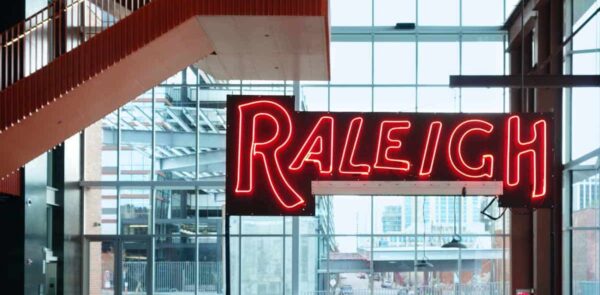
Jump to a section:
The theme park industry thrives on innovation and guest-centric experiences, adapting to evolving preferences for immersion and sustainability. We witness a surge in attendance and spending as parks integrate cutting-edge technologies and themed attractions to captivate diverse audiences. This growth reflects broader trends in leisure tourism, where consumers seek memorable, personalized outings. By understanding these dynamics, operators can optimize strategies to boost revenue and loyalty. As we explore key trends and the market outlook, you’ll discover actionable insights, including AI’s role in enhancing operations, to guide your approach in this vibrant sector.
Immersive Technologies Transforming Guest Experiences
We see immersive technologies leading the charge, elevating theme park visits through AR, VR, holograms, and projection mapping. These tools create interactive worlds where guests actively participate, such as in Universal’s Epic Universe with omnidirectional vehicles in rides like Battle at the Ministry, blending physical thrills with digital storytelling. This trend extends to AR-based scavenger hunts and real-time queue management apps, making waits engaging and reducing frustration. Parks like Disney and Universal invest heavily here, with VR roller coasters and spatial audio enhancing narratives, drawing in tech-savvy families and boosting satisfaction scores.
Projection mapping and LED screens further immerse visitors in themed environments, as seen in Qiddiya City’s holographic stadiums and Studio Ghibli’s preserved natural areas with digital overlays. We incorporate AI to personalize these experiences, predicting guest preferences for tailored ride suggestions or augmented overlays. This not only heightens enjoyment but also encourages social sharing, amplifying word-of-mouth marketing. Data indicates that parks adopting these technologies report up to 20% higher repeat visits, as guests crave the novelty and escapism they provide.
Beyond rides, immersive tech integrates into food and hotels, like Meow Wolf’s surreal dive bars or Netflix House’s show-based dining. We emphasize seamless blending of physical and virtual elements, ensuring accessibility for all ages. This approach addresses shorter attention spans while fostering emotional connections, turning one-time visitors into loyal fans.
- AR and VR Applications: Use for interactive hunts and virtual coasters to engage younger demographics actively.
- Projection and Holograms: Enhance nighttime shows and themed zones for memorable, shareable moments.
- AI Personalization Features: Predict and suggest experiences based on past behaviors for customized visits.
- Accessibility Enhancements: Incorporate inclusive designs to make tech available to diverse guests.
These technologies redefine engagement, making parks must-visit destinations. We track adoption rates to refine implementations, ensuring they align with guest feedback for sustained appeal.
| Technology | Adoption Impact | Example Parks |
|---|---|---|
| AR/VR Rides | 20% higher repeats | Disney, Universal |
| Projection Mapping | Enhanced narratives | Qiddiya, Ghibli |
| Holographic Elements | Interactive shows | Epic Universe |
| AI Queues | Reduced wait frustration | Six Flags |
Embracing immersive tech positions parks for competitive edges. We anticipate further integrations, like hybrid realities, to dominate future developments.
The Linchpin team helps theme parks leverage immersive technologies through digital strategies that promote these experiences online. We create AR-enhanced campaigns and AI-driven content to attract visitors digitally. If integrating tech feels complex, we can streamline your marketing efforts.
Sustainability and Greener Innovations in Operations
We prioritize sustainability, with parks adopting eco-friendly practices to meet consumer demands for responsible tourism. Initiatives like energy-efficient rides, such as Intamin’s regenerative Gyro Swing at Liseberg, and electric vehicles at Efteling and Disneyland reduce carbon footprints while appealing to environmentally conscious guests. This trend includes preserving natural areas, as in Studio Ghibli’s park, and using sustainable materials in attractions, aligning with 58% of consumers willing to pay more for green options.
Water conservation and waste reduction feature prominently, with parks implementing advanced irrigation and zero-waste models. We use AI to optimize resource use, predicting crowd flows to minimize energy waste. Themed experiences now highlight conservation, like zoos’ drone monitoring of endangered species at Blackpool Zoo, educating visitors and fostering brand loyalty. These efforts not only comply with regulations but also enhance reputations, attracting eco-tourists and sponsorships.
Greener innovations extend to food and hotels, with plant-based options and sustainable sourcing in fantastic F&B experiences. We see this as a core value, with 70% of younger visitors preferring parks with strong environmental commitments, driving long-term growth.
- Eco-Ride Designs: Focus on regenerative and efficient tech to lower emissions and costs.
- Conservation Programs: Integrate education on biodiversity to engage families meaningfully.
- Resource Optimization: Employ AI for predictive management of energy and water.
- Sustainable F&B: Offer green dining to complement overall eco-themes.
This focus on sustainability builds trust and differentiates parks in crowded markets. We monitor global standards to ensure compliance and innovation.
| Sustainability Aspect | Consumer Preference | Park Examples |
|---|---|---|
| Energy-Efficient Rides | 58% pay more | Liseberg, Efteling |
| Natural Preservation | 70% youth favor | Ghibli, Blackpool |
| Waste Reduction | Regulatory alignment | Disney, Universal |
| AI Resource Tools | Operational savings | Six Flags |
Advancing greener practices ensures viability amid climate challenges. We expect more certifications and partnerships to amplify these efforts.
At Linchpin, we promote sustainability through digital campaigns that highlight eco-initiatives, using AI to target conscious consumers. We craft content that showcases your green commitments. Let us help communicate your efforts effectively.
AI-Powered Personalization and Revenue Strategies
We harness AI to personalize experiences, boosting revenue through dynamic pricing and tailored offerings. Tools like Attractions.io’s AI Assistant anticipate preferences, suggesting add-ons like skip-the-line passes, favored by 81.6% of guests. This scalability enhances satisfaction, with 47% willing to pay more for customized visits, as in Disney’s VIP tours or Gardaland’s Lego merchandise.
Dynamic pricing adjusts based on demand and weather, gaining acceptance when transparent and paired with discounts for passes. We analyze data from purchase histories to optimize bundles, increasing per-guest spending on themed dining and early access. AI also streamlines operations, like Six Flags’ digital concierge, reducing staff needs while improving service.
These strategies diversify income beyond tickets, with premium experiences driving 25% revenue growth in adopting parks. We integrate AI ethically, ensuring privacy to build trust.
- Dynamic Pricing Tactics: Adjust for factors like weather to balance crowds and earnings.
- AI Personalization: Use data for tailored suggestions and in-app experiences.
- Premium Add-Ons: Offer bundles for higher spending on exclusives.
- Data-Driven Bundles: Analyze histories to create appealing packages.
AI transforms operations into revenue engines. We refine these with real-time analytics for ongoing improvements.
| Strategy | Guest Interest | Revenue Impact |
|---|---|---|
| Skip-the-Line | 81.6% | 25% growth |
| Personalized Tours | 47% pay more | Higher per-guest |
| Dynamic Pricing | Transparent acceptance | Optimized earnings |
| Themed Dining | 72.6% early access | Diversified income |
This personalization trend sets new standards for guest-centric parks. We foresee broader AI adoption for predictive enhancements.
The Linchpin team implements AI-powered digital strategies for theme parks, from personalized ads to data-driven content. We optimize your online presence to reflect these innovations. Contact us to enhance your revenue tactics digitally.
Expansion of Themed Entertainment and IP Integration
We observe a boom in themed entertainment, leveraging IP from gaming, horror, and children’s brands to attract niches. Gaming expansions like Universal’s Donkey Kong Country and Merlin’s Minecraft attractions draw urban dwellers, while permanent horror zones at Epic Universe cater to thrill-seekers year-round. Family coasters and children’s IP, such as Mattel’s Hot Wheels and Barbie at adventure parks, ensure broad appeal.
Floating theme parks on cruises, like Royal Caribbean’s Icon of the Seas, extend reach, blending vacations with thrills. We use AI to curate IP-based experiences, predicting popular integrations. This trend boosts attendance, with IP-driven parks seeing 15% higher visits.
Unique hotels and F&B, like Disneyland’s Pixar-themed stays and Europa-Park’s Eatrenalin, enhance stays, turning parks into destinations. We focus on inclusivity, with accessible designs broadening access.
- Gaming IP Growth: Partner for attractions like Minecraft to engage younger audiences.
- Horror Experiences: Create year-round zones for dedicated fans.
- Children’s Brands: Develop family-friendly rides with popular IPs.
- Cruise Integrations: Offer themed ships for extended entertainment.
IP expansion diversifies offerings, sustaining interest. We align these with market demands for innovative themes.
| IP Type | Growth Area | Attendance Boost |
|---|---|---|
| Gaming | Expansions like Donkey Kong | 15% higher |
| Horror | Permanent zones | Year-round appeal |
| Children’s | Hot Wheels coasters | Family draw |
| Cruises | Water parks at sea | Vacation fusion |
This integration fuels creativity and revenue. We expect more cross-industry collaborations.
Linchpin crafts digital campaigns that highlight themed IP, using AI to target fans online. We build excitement through social and SEO strategies. Reach out to amplify your themed offerings.
Market Outlook
We project robust growth for the theme park market, with global revenue reaching around $62-72 billion, driven by rising disposable incomes and immersive innovations. The tourism segment anticipates $72.3 billion, expanding at 11.4% CAGR to 2035, fueled by AI and VR advancements. Regionally, the US leads with over 75 million tourists, supported by Disney and Universal, while China invests $50 billion by 2030 for middle-class appeal.
Europe and Japan maintain strong positions with cultural integrations, and emerging markets like the Middle East grow through high-tech parks. Challenges include economic uncertainties, but opportunities in sustainability and personalization mitigate them. We see attendance swelling, with parks like Disney contributing $67 billion in US economic impact.
Overall, the outlook is optimistic, with CAGR of 3-5% globally, emphasizing tech and eco-practices for sustained expansion.
| Region | Future Projection | Key Driver |
|---|---|---|
| US | $35-40 billion | IP innovations |
| China | Rapid expansion | Middle-class growth |
| Europe | Stable growth | Sustainability |
| Global | $62-72 billion | Tech adoption |
This positive trajectory hinges on adaptive strategies. We monitor indicators for informed forecasting.
The Linchpin team provides market outlook insights through digital analytics, helping parks align strategies with trends. We forecast and target audiences effectively. Let us support your growth planning.
If you need help with theme park marketing, contact the Linchpin team today to get started on elevating your strategies.


